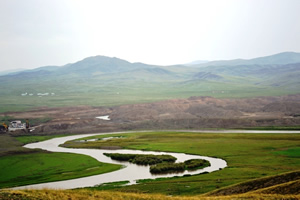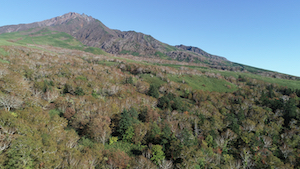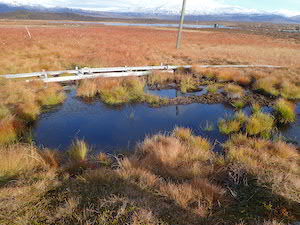Research
We study processes enacted upon human and natural environment in local and regional scales, with interdisciplinary fields comprised of physical geography, environmental chemistry, forest ecology, soil science, anthropology and so on. Research methods are in primary based on fieldworks associated with laboratory analyses of soil, water, plant and other environmental samples collected, interview survey, aerial photo and satellite imagery interpretation as well.Evaluation of urban soils as environmental resources is one of our major research subject together with overseas field studies.
Recent themes
- Monitoring of environmental changes in Japan and overseas and prediction of short- and long-term changes
- Environmental impact assessment of human activities on various terrestrial ecosystems
- Analysis of environmental dynamics of wastes affecting natural ecosystems
- Vegetational shifts on mountainous areas induced by climate change
- Long-term monitoring of forest dynamics related to topography
- Conservation and sustainable use of natural environments in semi-arid tropical regions
Staff
Prof. Masayuki KAWAHIGASHI

Water, soil and vegetation in various ecosystems are more or less affected by human activities in modern times. Our research spatially and temporally tracks properties of environmental media by field surveys and laboratory analyses to evaluate changes in targeting environments from the microscopic and macroscopic point of views. For example, we conduct researches and analyses on agricultural lands with a gradient of impacts of human activities, such as land-use changes or installation of drainage systems or construction of infrastructures. Any parameters can be mapped and assessed with indicators of urbanization, agricultural and/or industrial activities.
Key words: urbanization, agricultural land, forested area, abandoned land, material cycling, contaminated soil, chemical analyses, soil organic matter, humic substances, heavy metals
Research theme: “Changes in environmental parameters in terrestrial ecosystems”
Prof. Keiichiro YOSHIDA >> homepage
 There are various types of vegetation on the earth, such as forests, grasslands, tundra, deserts, etc. The distribution and development process of such diverse vegetation are the subject of vegetation geography. I have conducted research on characteristic vegetation in Japan and overseas. Recently, I have been focusing on the dynamic processes of vegetation, and have conducted field studies on shifts in treeline and vegetational zones due to global warming. I am also interested in the effects of human activities on vegetation, and hope to contribute to the sustainable development of society through vegetation geography by understanding the effects of continuous human activities such as grazing and wildfires.
There are various types of vegetation on the earth, such as forests, grasslands, tundra, deserts, etc. The distribution and development process of such diverse vegetation are the subject of vegetation geography. I have conducted research on characteristic vegetation in Japan and overseas. Recently, I have been focusing on the dynamic processes of vegetation, and have conducted field studies on shifts in treeline and vegetational zones due to global warming. I am also interested in the effects of human activities on vegetation, and hope to contribute to the sustainable development of society through vegetation geography by understanding the effects of continuous human activities such as grazing and wildfires.
Key words: Vegetation, Vegetation dynamics, Treeline, Vegetational boundary (ecotone), Climate change, Human-nature relationship, Anthropogenic disturbance, Sustainability, Conservation, Mt. Rishiri, Ogasawara Islands, Hawaii, Brazil
Research theme: “Vegetational shifts in mountainous areas due to climate change” “Conservation and sustainable use of the natural environment in tropical semi-arid regions”
Assistant Prof. Dahédrey Payandi-Rolland
 The complexity of natural ecosystems relies on the various interactions between biota, hydrology, and physicochemical environment. Those interactions can be seen at a large scale, such as the change of vegetation due to lack or excess of water during an extended period, but also at a microscale, for example when the vegetation changes the functional diversity of microorganisms in soils will also change to fit the new vegetation. This implies that every change, as little as it may be, can influence the whole surrounding ecosystem. Currently, the two main threats to those balanced systems are human activities (pollution and infrastructure) and climate change. And among the most fragile ecosystems, there are peatlands. To better understand the impacts of those threats on peatlands we conduct local and international field surveys combined with GIS observations to tackle both their space and time influences.
The complexity of natural ecosystems relies on the various interactions between biota, hydrology, and physicochemical environment. Those interactions can be seen at a large scale, such as the change of vegetation due to lack or excess of water during an extended period, but also at a microscale, for example when the vegetation changes the functional diversity of microorganisms in soils will also change to fit the new vegetation. This implies that every change, as little as it may be, can influence the whole surrounding ecosystem. Currently, the two main threats to those balanced systems are human activities (pollution and infrastructure) and climate change. And among the most fragile ecosystems, there are peatlands. To better understand the impacts of those threats on peatlands we conduct local and international field surveys combined with GIS observations to tackle both their space and time influences.
Key words: mountainous peatlands, anthropic activities, climate change, whole system approach
Research theme: “Peatlands ecosystems under current threats: impacts and adaptations”

